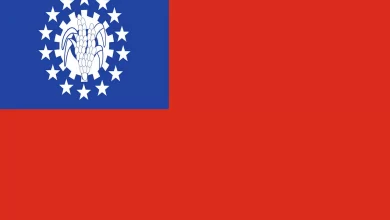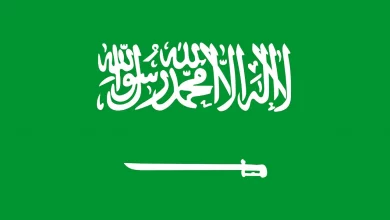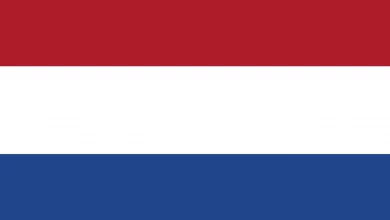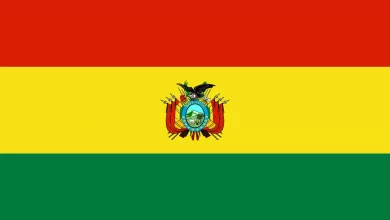Cuba is a long and slender island. It is 750 miles (1,200 kilometres) long from east to west but only 60 miles (100 kilometres) wide in most places. High mountains and rolling hills cover One-third of Cuba, and the remaining two-thirds of the island comprises lowland plains that are primarily used for farming. Cuba’s mix of indigenous, African, and European influences has resulted in a vibrant, well-known culture around the world. The arrival of communism in the country in 1959 had a significant impact on the people, both positive and negative. Cuba’s history can be found in its food, language, art, and, most notably, music. Bands appear to be everywhere in Havana at all times of the year. So here are 36 astonishing facts about Cuba.
- The country’s official name is the Republic of Cuba (República de Cuba).
- Cuba is a Caribbean Island country comprised of the main island of Cuba, Isla de la Juventud, and several archipelagos. The United States, Bahamas, Mexico, Cayman Islands, Jamaica, Haiti, and the Dominican Republic are its closest neighbours.
- The exact meaning of the name of the country, “Cuba”, is unclear, but it may be translated as ‘where fertile land is abundant’ (Cubao) or ‘great place’ (cabana).
- Cuba is often called El Caiman or El Cocodrilo (meaning crocodile in Spanish). It is said so because the island country looks like an alligator from an aerial view.
- White Mariposa is the country’s national flower, and Royal Palm is the national tree.
- Baseball is the national game of Cuba as well as the most popular. The country has won 25 Baseball World Cups. Boxing, Volleyball and Football are also widely accepted sports. The people of Cuba were not allowed to have a mobile phone till the end of the year 2008. Before that, mobile phones were restricted to the government or foreigners roaming in the country before that.
- Cuba had two official currencies before January 1 2021, one was Cuba’s national peso (CUP), and the other was its convertible peso (CUC). After dithering for three decades, the country’s president finally abolished one of its currencies, a big step for its economy.
- There are only two countries on the planet where coca-cola is not sold legally. One is North Korea, and the second one is Cuba. However, you can get coca-cola in some small stores illegally.
- In Cuba, government vehicles are legally obliged to pick up hitchhikers, provided if passenger space is available. As there are few cars in the country, hitchhiking is encouraged, and designated hitchhiking spots are used. Riders who are waiting are picked up on a first-come, first-served basis
- For More than 50 years, the country had a ban on the import of vehicles, and the ban was lifted in 2011.
- Until 1998 celebrating Christmas was banned in the nation. It was outlawed by the atheist Castro regime in 1969. The ban ended when Pope John Paul II’s visited the island country in 1998.
- Since May 1, 2010, travel insurance has been mandatory for all tourists visiting the country, and the insurance documents are checked upon arrival.
- There is no particular law in the country to drink alcohol on the streets. So you can easily and legally enjoy a beer or any alcoholic beverages on the streets of Cuba.
- Cuba is one of the safest countries in the American continent as it has the lowest crime rate of any other country in Latin America.
- Cuba is one of the most literate countries in the world. In the year 2021 literacy rate in Cuba was about 99.71 Percent.
- Cuba has the 3rd highest number of doctors per capita globally, with 67.2 doctors for every 10,000 people. Qatar is the first on the list, with 77.4 doctors per 10k people.
- Cuba ranks 30th among the healthiest countries index of the world with a health grade of 74.66 in the year 2019. Cubans are also blessed with free healthcare services as the government finances them.
- Education is entirely free till schooling whereas compulsory for children from the age of 6 to 16.
- Being a small country, the country has over 47 universities. The University of Havana is the largest, oldest, and leading academic institution in Cuba. It was established in 1728 and is also one of the first universities founded in the entire American continent.
- Cuba is the Caribbean’s largest island and country, covering nearly 111 thousand square kilometres and has a coastline of about 5,746 km (3,570 mi).
- Cuba has the fifth-highest number of UNESCO World Heritage Sites in Latin America, with nine sites.
- Cuba has one of the highest life expectancy rates in the region. In 2020 life expectancy at birth was 78.89 years. While in the year 1971, it was 70.31 years, so the life expectancy is growing in the country with an average annual rate of 0.24%.
- Cuba’s road network spans over 60,858 kilometres (37,815 miles), with over 29,850 kilometres (18,550 miles) of paved roads and 31,038 kilometres (19,286 miles) of unpaved roads.
- The top 5 exports of Cuba in the year 2019 was Rolled Tobacco, Rolled Tobacco ($287 Million), Raw Sugar ($211 Million), Nickel Mattes ($134 Million), Hard Liquor ($97.3 Million), and Zinc Ore ($78.4 Million).
- The top 5 Imports in 2019 were Poultry Meat ($286M), Wheat ($181M), Soybean Meal ($167M), Corn ($146M), and Concentrated Milk ($136M)
- Cuba has the 4th highest rate of home ownership rate in the world. The country’s ownership rate is 90 per cent. The top 3 countries are Romania (96.4%), Singapore (90.8%), Slovakia(90.3%).
- The prevailing religion in Cuba is Roman Catholicism( 60%), Protestantism and other Christians (5%), Non-religious (24%), Others/African spirituality (11%).
- Son Cubano is a music and dance genre that originated in the late nineteenth century in the highlands of eastern Cuba. It is a hybrid genre that combines elements of Spanish and African origin, and this is the most popular musical genre in Cuba.
- There were four official instances when United States President tried to buy Cuba.
· 1808 – Thomas Jefferson (undisclosed sum)
· 1848 – James Polk (US$100 million)
· 1854 – Franklin Pierce (US$130 million)
· 1898 – William McKinley (US$300 million) - Cuba had been ruled by Spain from the year 1492 until 1898, when the United States took over the territory in the Spanish–American War.
- Cuba is home to the worlds smallest bird, the Bee Hummingbird. They weigh less than two grams.
- The country is also home to the smallest frog in the northern hemisphere and the third smallest on the planet. The frog’s name is Monte Iberia eleuth or Monte Iberia dwarf frog and is only 10mm (0.4 inches) in length.
- Cuba is home to rich flora and fauna. But none of the plants or animals is poisonous there, including snakes.
- Cuba is among the top 5 boxing countries in the world. Cuba has produced some of the world’s most talented and skilled boxers.
- Pico Turquino is the highest mountain peak in Cuba, with an elevation of 1,974 m (6,476 ft).
Quick Facts about Cuba
- CAPITAL CITY: Havana
- POPULATION: 1.13 crores
- POPULATION RANK: 83rd
- LARGEST CITY: Vertientes
- OFFICIAL LANGUAGES: Spanish
- GDP NOMINAL: 10,313.1 crores USD
- GDP RANK: 62nd
- CURRENCY: Cuban peso
- FOUNDED: 20 May 1902
- FATHER OF THE NATION: Carlos Manuel de Céspedes
- TOTAL AREA: 109,884 km2
- AREA RANK: 106th worldwide
- CONTINENT: North America
- AVERAGE LIFE EXPECTANCY: 78.80 years
- ARMY STRENGTH: 50,000 personnel
- ARMY RANK: 76th
- LITERACY RATE: 99.75%
- PER CAPITA INCOME: $8,822 (nominal, 2018)
References
- Wikipedia-Cuba
- Reuters(Base Ball championship won)
- BBC(Coca Cola is not sold)
- Vice.com(Hitchhikers)
- scrapcarcomparison.co.uk(Car Import Ban)
- whychristmas.com(Christmas was banned in Cuba)
- /a>(Drinking on the streets is legal)
- Insightcuba.com
- Worldpopulationreview.com(Literacy Rate)
- Worldatlas.com(Doctor Per Capita)
- Oncubanews.com(healthiest Countries index)
- Timeshighereducation.com(Universities in Cuba)
- Wikipedia-Geography of Cuba
- Wikipedia-Cuba Roads
- Oec.world(Imports and Exports)
- Wikipedia-Cuba spain relations
- Audubon.org(World Smallest Bird)
- Wikipedia-Monte Iberia Eleuth(Smallest Frog)
- Cubadirect.co.uk
- Wikipedia.org-Pico Turquino(Highest Mountain Peak in Cuba)






